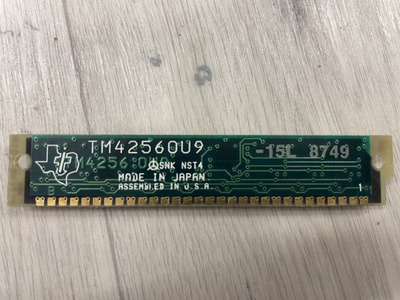tony359 wrote on 2022-12-16, 18:35:
I did not try to move the stepper - my observation is only based on the noise I hear - that is, I don't hear much movement.
Listening to the sound of the drive, I don't think that drive still uses the old stepper technology, it sounds more like modern voice-coil operated head that bangs against some mechanical stop. It might be a broken track zero sensor, if the drive still has something like that.
tony359 wrote on 2022-12-16, 18:35:
Here is a video showing the issue. After trying to power up, the drive blinks its LED 4 times (I noticed that it changes number of blinks when I turned it on with a cable unintentionally disconnected so there must be a meaning there).
The hard drives in the model 30 8086 are a variation of XT IDE drive[1], which means the drive itself has a microcontroller. The slow blinking you observe at power-up is normal, you can compare it to this power-up video of a HDD equipped model 30: https://youtu.be/61UbTmlTWSU?t=344 . I count three normal slow cycles and then a quick double blink. This double blink could be an error code emitted in the drive power-up sequence. You see that in the "reference video" the fourth blink is also shorter than the first three cycles, but it's a single one.
I guess you are right that there is some issue related to head positioning, and the double blink is an error code indicating "positioning system failed, giving up".
Footnote:
1: I'm not talking about the modern XT-IDE interface card, and I am also not talking about the XT-IDE BIOS that has been developed for that card, and is widely used in the retro community as enhanced IDE BIOS even in AT-class computers. Instead, I'm talking about "classic" XT IDE (aka XTA), as described here: https://www.dosdays.co.uk/topics/xt_ide_vs_ide.php . Of course, IBM being IBM designed a proprietary connector including power instead of the standard XTA configuration, so the pinout on that page is of no help for you. The IBM PS/2 technical reference for the PS/2 model 25 or 30 includes the IBM pinout, should you be interested in it.
